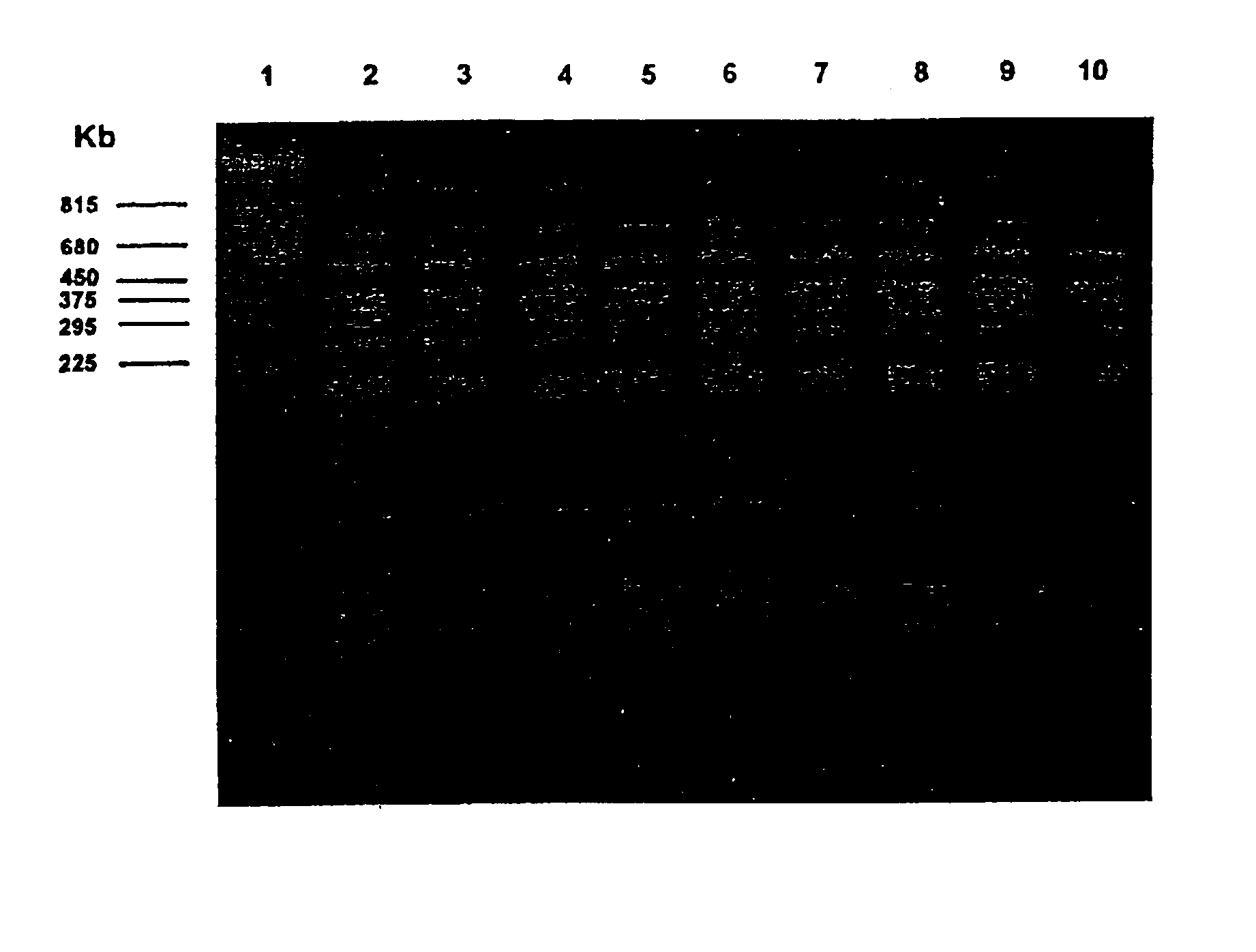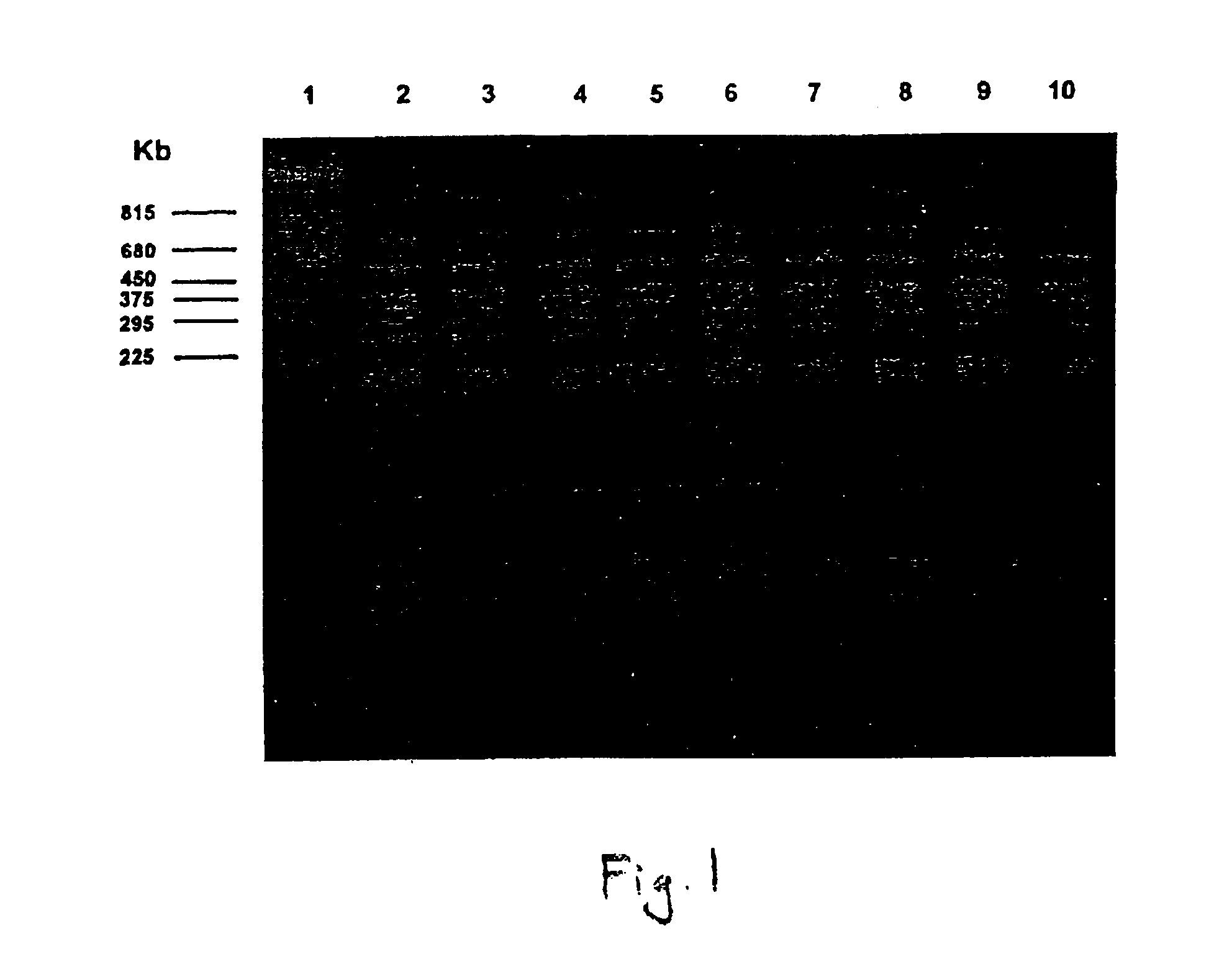Method for suppressing growth of mycobacteria in metalworking fluids
a technology for metalworking fluids and mycobacteria, which is applied in the direction of biocide, water/sewage treatment by oxidation, deodrants, etc., can solve the problems of affecting the work efficiency of metalworking machinists, and requiring relatively large amounts of compound antimicrobials, so as to reduce the risk of metal-grinding machinists contracting hypersensitivity pneumoni
- Summary
- Abstract
- Description
- Claims
- Application Information
AI Technical Summary
Benefits of technology
Problems solved by technology
Method used
Image
Examples
examples 1 and 2
[0048]This example illustrates that in order for the mixture to be efficacious against Mycobacterium immunogenum MWF isolates, the copper activity from the copper metal complex needs to be present in industrial MWF systems either prior to addition of the isothiazolones or the copper metal complex is mixed with the isothiazolones and the mixture is added to the MWF. When the isothiazolones are added 24 hours before the copper metal complex is added, there is no protection. In spite of instructions to on-site workforces about the order and time of addition of the copper metal complex and the isothiazolones, frequently the isothiazolones are added before the copper metal complex. The result is no biocidal protection against mycobacteria.
[0049]The MWFs selected were fluids which had evidence of CMIT incompatibility. The MCC was added to the MWFs 24 hours before the CMIT was added; 24 hours after the CMIT was added; or in a mixture with the CMIT. This was done for each concentration of C...
examples 3 and 4
[0054]In this example, the amount of copper citrate was decreased in a static system to reproduce the potential loss of copper citrate from MWFs in a metalworking plant's recirculating system.
[0055]The MWFs selected were fluids which had evidence of CMIT incompatibility. The MCC was added to the MWFs 24 hours before the CMIT was added at 15 ppm. Stability was evaluated at time 0 and then after 24 and 48 hours by chemical analysis. Plating for mycobacteria kill was performed with aliquots from time 0 and after 48 hours.
[0056]As shown in Tables 3 and 4, the amount of copper which is needed for stability and effective suppression of mycobacteria growth is greater than 250 ppm, preferably about 500 ppm or more.
[0057]This example further demonstrates the ability of the 15 ppm CMIT / 500 ppm MCC of the present invention to control the Mycobacterium immunogenum isolate which is the etiological agent for HP among machine tool workers. In addition, the CMIT in the mixture of the present invent...
examples 5-8
[0060]The data shown in the following tables was generated from samples from the field already treated with two biocides, GROTON (a formalydehyde condensate available from Troy Corporation, Florham Park, N.J.) and KATHON (CMIT). Each table shows the results for samples obtained from a particular source. The tables show the survival of mycobacteria in the presence of CMIT alone. Note that there are two columns for the CMIT: chlorinated and unchlorinated. The ratio of chlorinated to unchlorinated in virgin CMIT is 3 to 1. The chlorinated form is the most active component of the CMIT and it is the most nucleophile sensitive. When the ratio of chorinated to unchlorinated is less than 3 to 1, it is assumed that the chlorinated moiety has been reduced by one or more components in the MWF.
[0061]The tables also show that the total plate count for bacteria for all samples except for those labeled J were less than 1. The J samples had no detectable biocides whereas all the other samples had s...
PUM
| Property | Measurement | Unit |
|---|---|---|
| Fraction | aaaaa | aaaaa |
| Fraction | aaaaa | aaaaa |
| Fraction | aaaaa | aaaaa |
Abstract
Description
Claims
Application Information
 Login to View More
Login to View More - R&D
- Intellectual Property
- Life Sciences
- Materials
- Tech Scout
- Unparalleled Data Quality
- Higher Quality Content
- 60% Fewer Hallucinations
Browse by: Latest US Patents, China's latest patents, Technical Efficacy Thesaurus, Application Domain, Technology Topic, Popular Technical Reports.
© 2025 PatSnap. All rights reserved.Legal|Privacy policy|Modern Slavery Act Transparency Statement|Sitemap|About US| Contact US: help@patsnap.com


